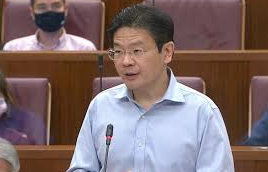As discussions on gender inequality and workplace culture evolve, can we turn buzz into meaningful action?
2022 was a year dominated by workplace buzzwords.
From the Great Resignation to Quiet Quitting, Quiet Firing, and Career Cushioning, disillusioned employees coined new terms to articulate their long-standing frustrations with work environments.
As an employee, I find myself captivated by these discussions. Like many 9-to-5 workers, I’ve imagined what quiet quitting my job might entail and pondered my backup plans as a recession looms. Perhaps moonlighting could be a viable option too.
These thoughts swirl in my mind as I prepare to interview a group of female visual effects (VFX) creatives.
We’ll be discussing gender inequality in the workplace, a topic that has been extensively covered. Is it really necessary to spotlight the challenges faced by women in a specific industry like VFX when underrepresentation is a widespread issue?
In Singapore, 7 in 10 women across various fields acknowledge that male and female workers are treated differently, while 4 in 10 women report experiencing gender discrimination compared to just 1 in 10 men.
Moreover, I dread asking the same questions over and over: “Why aren’t more women entering this field?” and “What can be done to improve the situation?”
You might wonder how workplace buzzwords tie into gender inequality.
On the surface, they seem unrelated, but they both reflect a shared sentiment: our workplaces are failing us.
Both gender inequality and the emergence of these buzzwords stem from the abusive behavior of those in positions of power and a systemic disregard for dedicated workers.
Instead of labeling long-standing issues with trendy phrases, isn’t it time we address these abusive practices head-on?
The Quandary
Writing about gender inequality and toxic workplace cultures can feel stifling. These subjects have been explored countless times in myriad ways, leaving little room for fresh perspectives.
I’m not suggesting these conversations aren’t important; rather, I question whether the enthusiasm for discussing them will persist once these terms fall out of favor.
Take the term “girlboss,” for instance. We once believed that elevating female leaders would remedy the structural issues perpetuated by men.
That assumption was misguided. Power dynamics, wealth, and greed don’t simply evaporate with the promotion of female empowerment—just look at Elizabeth Holmes.
Nevertheless, I remain committed to ensuring my interviewees receive the recognition they deserve. With careful precision in my approach, I hope to steer conversations toward actionable solutions.
One of my interviewees, Zubaida, is a young VFX artist and production researcher from Malaysia.
She recalls being the sole female student in her VFX course, feeling increasingly isolated when others perceived her as “technically unskilled” compared to her male peers.
Though she has not encountered such attitudes in her workplace, it can be painful to listen to industry-wide experiences.
What Can Be Done?
I frequently ask myself this question.
Jessica, a Singaporean digital creative director, highlighted that the post-production phase in VFX is notorious for demanding overtime.
Women who choose motherhood may struggle to meet these demands. Ellen, an Indonesian freelance VFX artist, shares this concern.
She mentioned that her friends, who wished to return to the VFX workforce after taking time off for family, faced gaps in experience and knowledge of tools, as well as extended working hours that no longer fit their lifestyles.
Thus, these women feel compelled to inspire younger generations and challenge their peers’ perceptions: women can deliver equally high-quality work, and their technical skills are not defined by gender.
Ultimately, they underscore the significance of a supportive network.
“If not for an initiative like Epic Games’ Women Creators Programme (WCP), it would have been difficult for us to connect with other creatives in the region,” Ellen noted.
Looking at these women on my screen, I ponder why they can’t find jobs in sectors that prioritize equity for all.
The reality is they are passionate about their work. Now, more than ever, the industry needs skilled VFX artists, producers, and supervisors to meet the growing demands for quality entertainment across genres.
As societal perspectives shift, so too do the valuable insights that can only be provided by those who have historically been marginalized.
Today, VFX is a field deserving of a genuine commitment to diversity and inclusion. Every industry should strive for a culture where conversations about gender inequality, quiet quitting, and workplace issues no longer need to be revisited repeatedly.
On Being Capable
“Quitting the VFX industry has never been an option for us, despite the challenges,” Zubaida asserts, with agreement from the others.
This leads me to question whether framing serious workplace issues as trends is an effective approach to resolution.
Trends appear appealing on the surface, but when the conversation inevitably wanes, we risk wasting time on discussions that lead to little progress.
How transformative would it be to channel our energy into tangible actions, such as creating space for women in male-dominated industries?
As Jessica puts it: “It’s perfectly acceptable to aspire to be a doctor or lawyer. However, we should also encourage the younger generation to explore diverse possibilities. We must remember that many people still have a lot to contribute.”
There is no shame in pursuing our passions and fulfilling our potential, even if others fail to validate us with new buzzwords.








